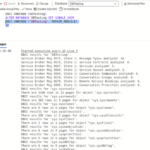
Learning how to enable SSH (Secure Shell) on Ubuntu is a crucial step for system administrators and developers who need secure remote access to their servers or machines. This guide will walk you through the process of enabling SSH on Ubuntu, ensuring you can connect to your system securely from anywhere. Whether you’re managing a remote server or just want to access your home computer while away, mastering SSH on Ubuntu is an essential skill.
What is SSH?
SSH, or Secure Shell, is a cryptographic network protocol that allows users to securely access and manage network devices and servers over an unsecured network. It provides a encrypted channel for data communication, ensuring that sensitive information like passwords and commands are protected from potential eavesdroppers.
Prerequisites
Before setting up everything it is important to ensure that you fulfilling the following first.
- An Ubuntu system (this guide covers Ubuntu 20.04 LTS and later)
- Administrator (sudo) access to your Ubuntu machine
- A stable internet connection
Installing OpenSSH Server
To enable SSH on Ubuntu, you first need to install the OpenSSH server. Here’s how:
- Open a terminal window.
- Update your package lists:
- sudo apt update
- Install the OpenSSH server package:
- Copysudo apt install openssh-server
- Confirm the installation when prompted.
Configuring SSH
After installation, you may want to configure SSH for better security or customization.
Open the SSH configuration file to make the desired changes. Common configurations include:
- • Changing the default port (Port 22)
- • Disabling root login (PermitRootLogin no)
- • Allowing specific users (AllowUsers username1 username2)
- Save changes and exit the editor (in nano, press Ctrl+X, then Y, then Enter).
Enabling SSH
By default, the SSH service should start automatically after installation. To ensure it’s running:
Check the SSH service status:
Connecting to Your Ubuntu Machine
Once SSH is enabled, you can connect to your Ubuntu machine from a remote system:
1. Open a terminal on the remote machine. You can use the following command to connect:
Note that you need to replace “username” with your Ubuntu username and “ip_address” with your machine’s IP address.
2. Accept the fingerprint prompt on first connection.
3. Enter your password when prompted.
Securing Your SSH Connection
To enhance the security of your SSH connection, it is recommended to use SSH keys instead of passwords:
- Generate an SSH key pair on your local machine
- Copy the public key to your Ubuntu server
- Disable password authentication in the SSH config
- Implement two-factor authentication (2FA)
You can also use a firewall to limit SSH access by using these commands:
$
$
Regularly update your system:
$
Troubleshooting Common Issues
If you encounter problems with SSH.
First you need to check if the SSH service is running by running the following command:
$
Verify firewall settings:
$
Ensure the correct port is open if you’ve changed it from the default.
Check SSH logs for any error messages:
Why Does This Matter?
Enabling SSH on Ubuntu is crucial for secure remote management of your systems. It allows you to access your Ubuntu machine from anywhere, perform maintenance tasks, transfer files securely, and even set up automated processes. By following this guide, you’ve not only enabled SSH but also learned how to secure it, ensuring your remote access is both convenient and safe.
In conclusion, enabling SSH on Ubuntu is a straightforward process that opens up a world of remote management possibilities. By following the steps outlined in this guide, you can securely access your Ubuntu machine from anywhere, streamlining your workflow and enhancing your system administration capabilities.
Related Articles
How to install and configure SSH on Ubuntu 22.04
How To Use SSH to Connect to a Remote Server
Similar Articles from Unixmen





